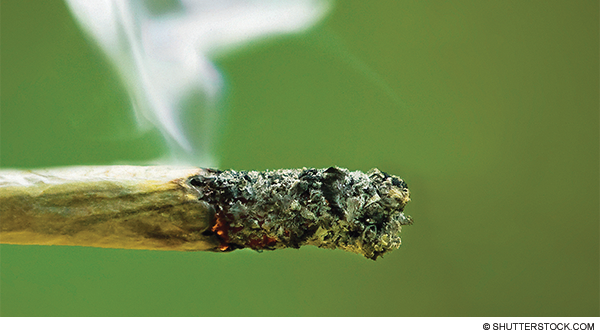
Prohibition of marijuana is a failed public health policy. Nearly 85 percent of Americans have tried marijuana. For at least two decades, it has been easier for adolescents to obtain marijuana than alcohol. Marijuana is the biggest cash crop in California. Nationwide, Americans spend and consume between $75 billion and $120 billion worth of marijuana annually.
Explore This Issue
ACEP Now: Vol 33 – No 10 – October 2014A majority of Americans recognize that prohibition of marijuana is a flawed and failed policy. In a recent Gallup poll, 58 percent of Americans favored the legalization of recreational marijuana. More than 80 percent of voters favor legalization of medical marijuana. Colorado and Washington voters legalized marijuana in 2013. Beginning in California in 1979 with the Compassionate Use Act, 23 states and the District of Columbia have legalized medical marijuana.
Prohibition of marijuana is an unjust law. The AMA’s Code of Medical Ethics Opinion 1.20 states, “In general, when physicians believe a law is unjust, they should work to change the law.” Roughly 800,000 people a year are arrested for illegal use of marijuana, 75 percent for simple possession for personal use. Clearly, when the prohibition of marijuana results in between three and four times as many arrests, prosecutions, and incarcerations of African-Americans and Latinos as of whites, who have a higher incidence of marijuana use, the law is unjust. Racial profiling and the discriminatory enforcement of marijuana prohibition are unjust. A marijuana conviction may prevent access to college scholarships, employment, voting, public housing, and firearms. I am confident that the majority of members of ACEP, the American Academy of Emergency Medicine, and the Emergency Medicine Residents’ Association are criminals who just weren’t caught.
Prohibition of marijuana is a violation of our personal liberties. Our Constitution is based on an individual’s right to “life, liberty, and the pursuit of happiness.” When President Nixon signed into law the Controlled Substances Act in 1970, marijuana was to be temporarily classified as a Schedule 1 drug pending the recommendation of the National Commission on Marijuana and Drug Abuse, commonly referred to as the Schafer Commission. On March 22, 1972, the commission’s chair, Raymond P. Shafer, presented a report to Congress and the public titled “Marijuana, A Signal of Misunderstanding,” which favored ending marijuana prohibition and adopting other methods to discourage use. The report states, “The actual and potential harm of use of the drug is not great enough to justify intrusion by the criminal law into private behavior, a step which our society takes only with the greatest reluctance.” The commission recommended the legalization of marijuana for personal use.
Pages: 1 2 | Single Page






One Response to “Legalizing Marijuana Will Make It Safer”
February 23, 2015
Will legalizing marijuana increase the burden on the Pediatric Emergency Department? | Your weekly PEM dose.[…] Some states have already legalized marijuana and others are likely to follow. This is a hot topic of discussion in Washington DC. The American Academy of Pediatrics (AAP) recently reaffirmed its position on keeping marijuana illegal “http://www.aap.org/en-us/about-the-aap/aap-press-room/pages/American-Academy-of-Pediatrics-Reaffirms-Opposition-to-Legalizing-Marijuana-for-Recreational-or-Medical-Use.aspx“, while the American College of Emergency Physicians (ACEP) has a more tolerant view on this subject by suggesting that a more responsible use of marijuana might be expected if legalization were to be considered, as suggested in the the article here: “https://www.acepnow.com/article/legalizing-marijuana-will-make-safer/” […]